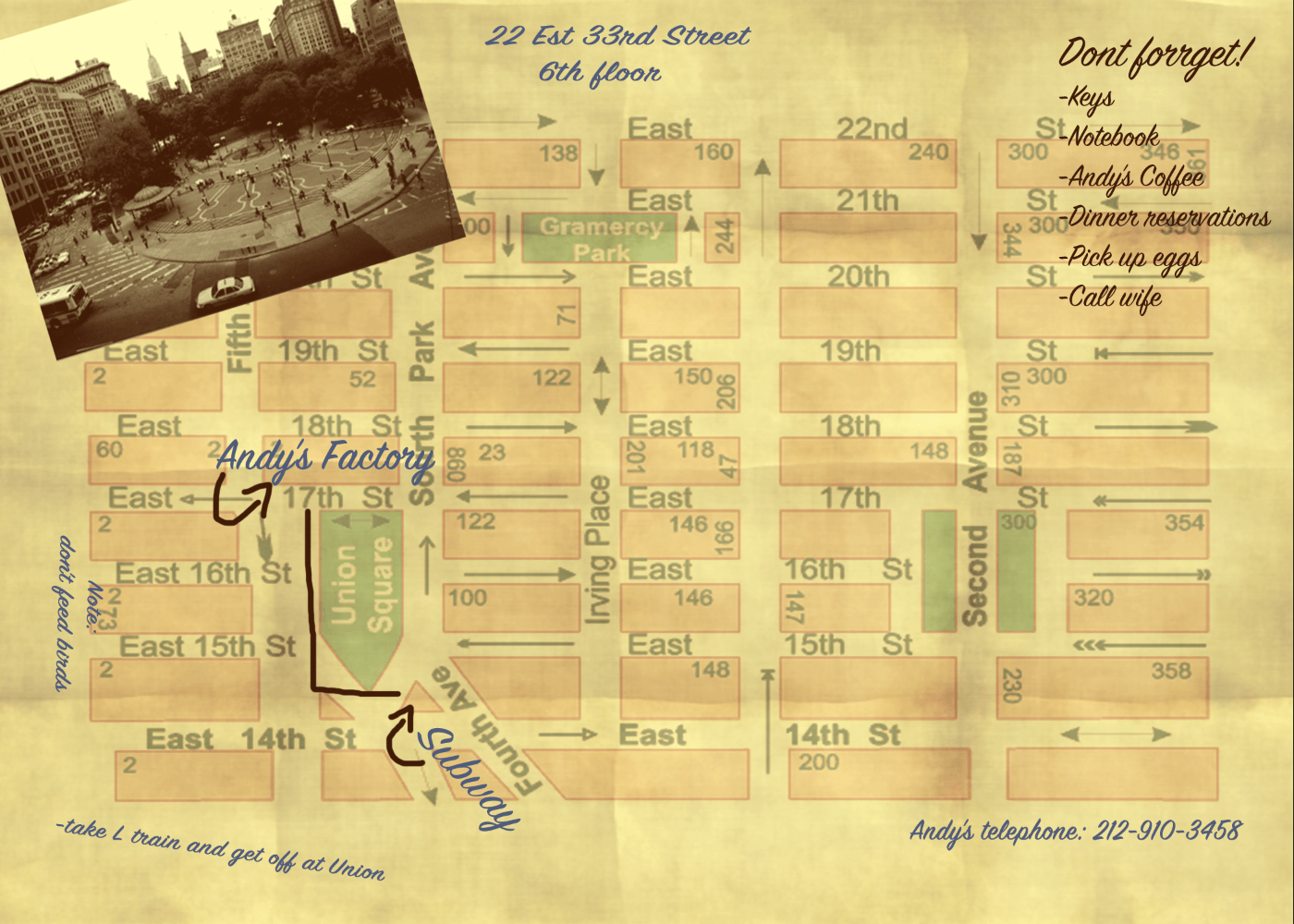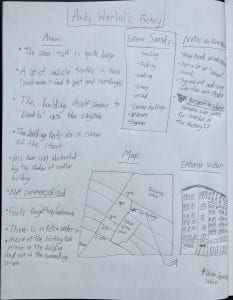When I began developing my project, I had the idea to create a period-piece that surrounded by a character and his connection to The Factory. After researching my historic site, I decided it would be interesting to have the tour itself take place in the late 1960s when Andy Warhol was at the height of his popularity. After doing research on various events that occurred at the Factory, I decided to have the narrator’s storyline be primarily based on the shooting that occurred in the Factory (which changed Andy Warhol forever). The character that I created was hired to be Warhol’s personal assistant after he was shot and injured. At the beginning of the piece, the audience isn’t sure who this character is and why he is going to The Factory. But throughout the walk, the audience slowly pieces together who the narrator is, where his story takes place, and what his connection is to The Factory.
One of the pieces of this project that I spent the most time on was the map itself. I wanted the map to be an equal part to the overall narrative and further immerse the audience. The map itself is meant to look like an old map that has small notes written on it and isn’t in the best condition. I created the map in this way so that the audience could get a little more insight on the main character and his life.
Initially I wanted to have all of the audio effects be historically accurate to the time-period, but I quickly realized that it would be impossible for me to create sounds (such as car horns and police sirens) from that era and I would have to take the majority of them from the internet. Wanting to create all of the audio myself, I decided to slightly change the narrative to have the main character be telling the audience a vivid flashback of what it was like walking to work for the first time at The Factory. Within this walk, we learn that narrator was a fan of Warhol’s through the various stories that he’s heard/read about him (this is also where the audience learns about the history of The Factory).
Overall, I chose The Factory as my historic site because I was fascinated by what The Factory meant to Andy Warhol and how exclusive it was. Essentially, The Factory was like an elite club where only the best artists were invited to meet, get inspired, and share ideas with each other. Furthermore, I found it quite interesting how the building itself seems almost forgotten to the general public; outside of the building there isn’t anything to let people know that one of Andy Warhol’s workshops (The Factory) was once located here.
Audio File:
Sketchbook Notes/Observations:
Map:
Notes, Script (Timeline), and Bibliography:


